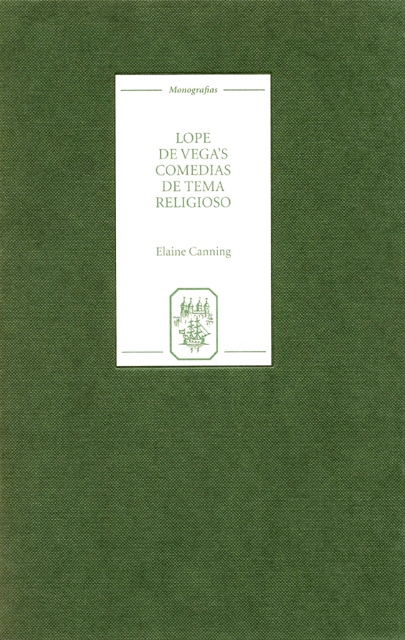1 - La Hermosa Ester and the Re-Creation of the Biblical Esther
Published online by Cambridge University Press: 04 May 2023
Summary
Any dramatist writing during Spain’s Golden Age was acutely aware that he was writing for a public obsessed by fe, salvación, gracia divina, condenación and of course Dios. Bartolomé Bennassar claims that ‘las cuestiones de la fe preocupaban en las conversaciones corrientes, en las plazas, a lo largo de los caminos’. The establishment of the Inquisition in Spain in 1478 to maintain religious homogeneity throughout the Peninsula, coupled with the Council of Trent’s efforts to christianise the masses from the midsixteenth century onwards, obviously contributed to the religious fanaticism which swamped Spain in the sixteenth and seventeenth centuries. Within this climate it is not surprising that the comedia de tema religioso became extremely popular among audiences of the corrales. For that reason, a significant number of religious dramas on various themes can be found among the corpus of plays attributed to many of the most important, influential dramatists of the Golden Age, including Mira de Amescua, Tirso de Molina and Calderón de la Barca.
What is particularly fascinating about the religious plays of this period is how they might have been interpreted by the seventeenth-century public. Golden Age dramatists were aiming to entertain an audience which not only believed that events as recounted in the Bible were factual, but which, primarily as a result of the oral transmission of detail, was also familiar with the Scriptures (preachers instructed through sermons and biblical catechisms). Similarly, the contemporary audience was well acquainted with hagiography. The cult of the saints, an essential component of popular religion in Spain from medieval times, was promoted by the Council of Trent in the sixteenth century. Following Trent, the authenticity of the works and miracles of venerated saints was stressed by the removal of ‘dubious’ saints from the Roman calendar and the implementation of a series of tests for new saints by the Sacred Congregation of Rites. The audience’s familiarity with, and knowledge of, the subject matter of many of the religious plays performed in the corrales, therefore, raises several key issues.
- Type
- Chapter
- Information
- Publisher: Boydell & BrewerPrint publication year: 2004

